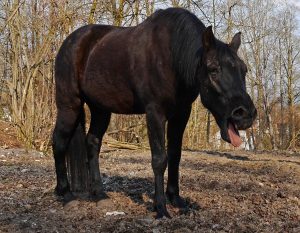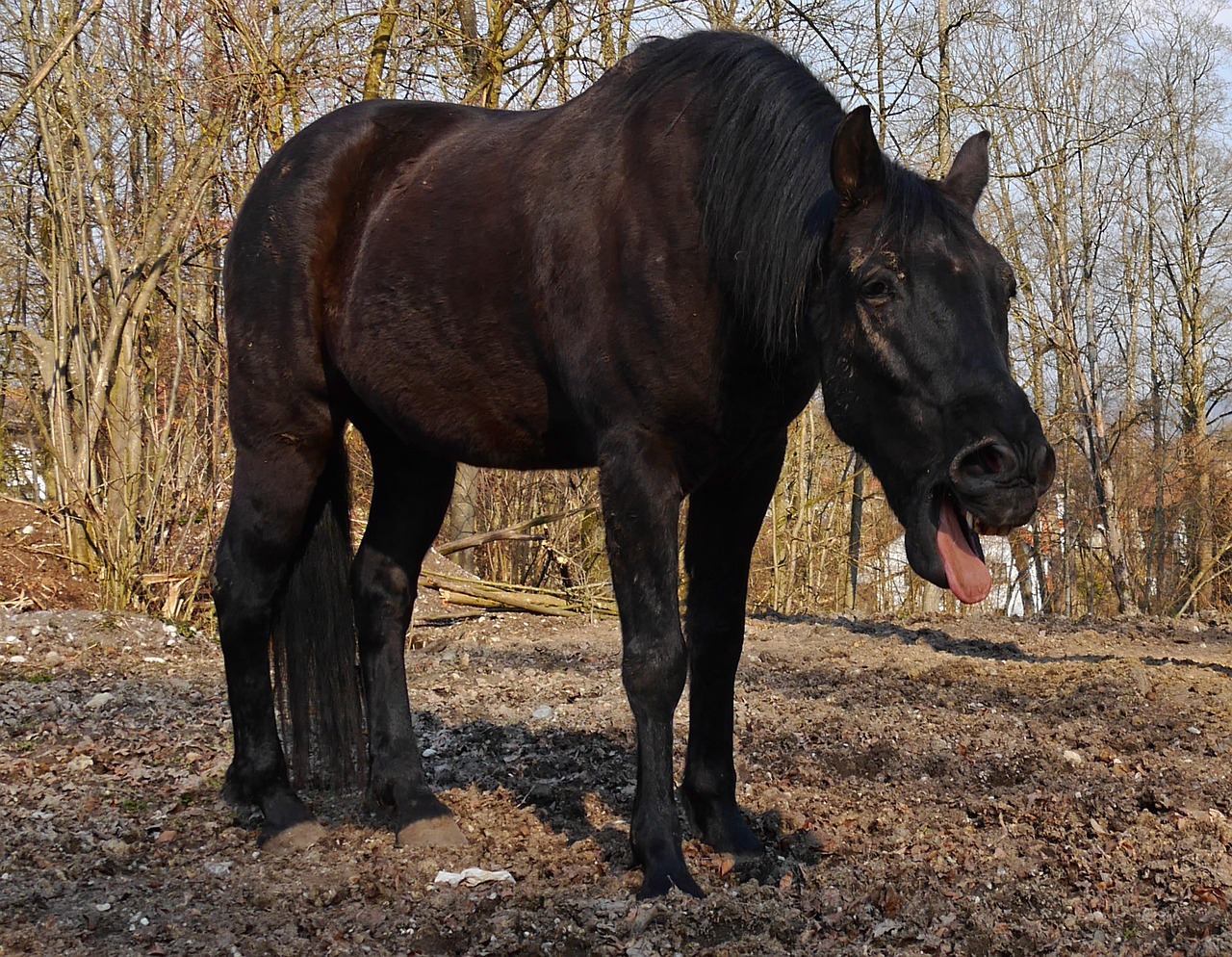By. Dr. Allison Hartman
 Heaves is a chronic, non-infectious inflammatory condition of the equine airway commonly referred to as Recurrent Airway Obstruction, or RAO. The generalized human equivalent is known as Chronic Obstructive Pulmonary Disorder (COPD) and can be compared to advanced cases of immune-mediated asthma. Like humans, heaves represents an allergic reaction within the respiratory tract, usually to inhaled contaminants like dust, mold, and pollen. The subsequent reaction is a three-part process that contributes to decreased respiratory efficiency within the horse. Inflammation of the tissues lining the airway, constriction of the smooth muscles supporting the airway and the accumulation of mucus within the airway all contribute to compromised airflow within the lungs. This results in increased effort on the part of the horse’s abdominal muscles to move air into and out of the lungs. Moderate to advanced cases will often have evidence of a “heave-line” along the lower border of their rib cage which is a visual representation of the overdeveloped abdominal muscles.
Heaves is a chronic, non-infectious inflammatory condition of the equine airway commonly referred to as Recurrent Airway Obstruction, or RAO. The generalized human equivalent is known as Chronic Obstructive Pulmonary Disorder (COPD) and can be compared to advanced cases of immune-mediated asthma. Like humans, heaves represents an allergic reaction within the respiratory tract, usually to inhaled contaminants like dust, mold, and pollen. The subsequent reaction is a three-part process that contributes to decreased respiratory efficiency within the horse. Inflammation of the tissues lining the airway, constriction of the smooth muscles supporting the airway and the accumulation of mucus within the airway all contribute to compromised airflow within the lungs. This results in increased effort on the part of the horse’s abdominal muscles to move air into and out of the lungs. Moderate to advanced cases will often have evidence of a “heave-line” along the lower border of their rib cage which is a visual representation of the overdeveloped abdominal muscles.
How do you know if your horse has heaves?
The initial stages of heaves present with little more than a few inconsistent coughs. Over time, those coughs become more regular and disruptive to the horse’s lifestyle, both in the barn and under saddle. Additional clinical signs include nasal discharge, wheezing, flared nostrils both at work and while resting and exercise intolerance.
Upon examination of a potential heaves patient, veterinarians will often perform a rebreathing test in addition to their general exam. During this process, a bag is placed over the horse’s nostrils for a short period of time. When the bag is removed, the horse will take a deep breath which will allow the veterinarian to listen to the integrity of the smaller airways within the horse’s lungs.
Other diagnostics involved in the workup of a potential heaves patient include bloodwork and a bronchoalveolar lavage, frequently referred to as a BAL. In this process, fluid is collected from within the lungs to assess the type of cells present. These cells help to differentiate an infectious process from an immune-mediated one and also helps to establish the severity of the disease process. Such information is vital when determining the prognosis and appropriate treatment protocols for a specific case.
Management and Treatment of Heaves Patients
Lifetime environmental management of heaves patients is a significant component in reaching a successful outcome. Since most of the allergens which initiated the inflammatory process are derived from the environment, these horses find the most comfort in well ventilated, dust-free situations. Full-time pasture living is the best environment for these horses but that’s a difficult expectation here in the Front Range. As such, dust-free bedding, open structures to encourage ample airflow and soaked hay are often the best we can accomplish in this region of Colorado. Keep in mind that the airways of a heaves horse remain hypersensitive to airborne stimuli so dusty roads and round bales are not in their best interest either.
the inflammatory process are derived from the environment, these horses find the most comfort in well ventilated, dust-free situations. Full-time pasture living is the best environment for these horses but that’s a difficult expectation here in the Front Range. As such, dust-free bedding, open structures to encourage ample airflow and soaked hay are often the best we can accomplish in this region of Colorado. Keep in mind that the airways of a heaves horse remain hypersensitive to airborne stimuli so dusty roads and round bales are not in their best interest either.
When environmental management is not enough to control the clinical signs of heaves, medical intervention is often required. Our most common medications include steroids, which act as both an anti-inflammatory and immunosuppressant, and bronchodilators. Antihistamines can be helpful in mild cases but seldom are enough to elicit beneficial responses in advanced situations. It is important to note that the long-term use of systemic steroids at high doses can have negative side effects including laminitis. Modern technology has enabled us to utilize aerosolized steroids in the form of inhalants which have similar efficacy to systemic steroids without the risk of laminitis.
While there is no cure for Recurrent Airway Obstruction, diligent management of environmental factors is key to long-term suspension of clinical signs.



